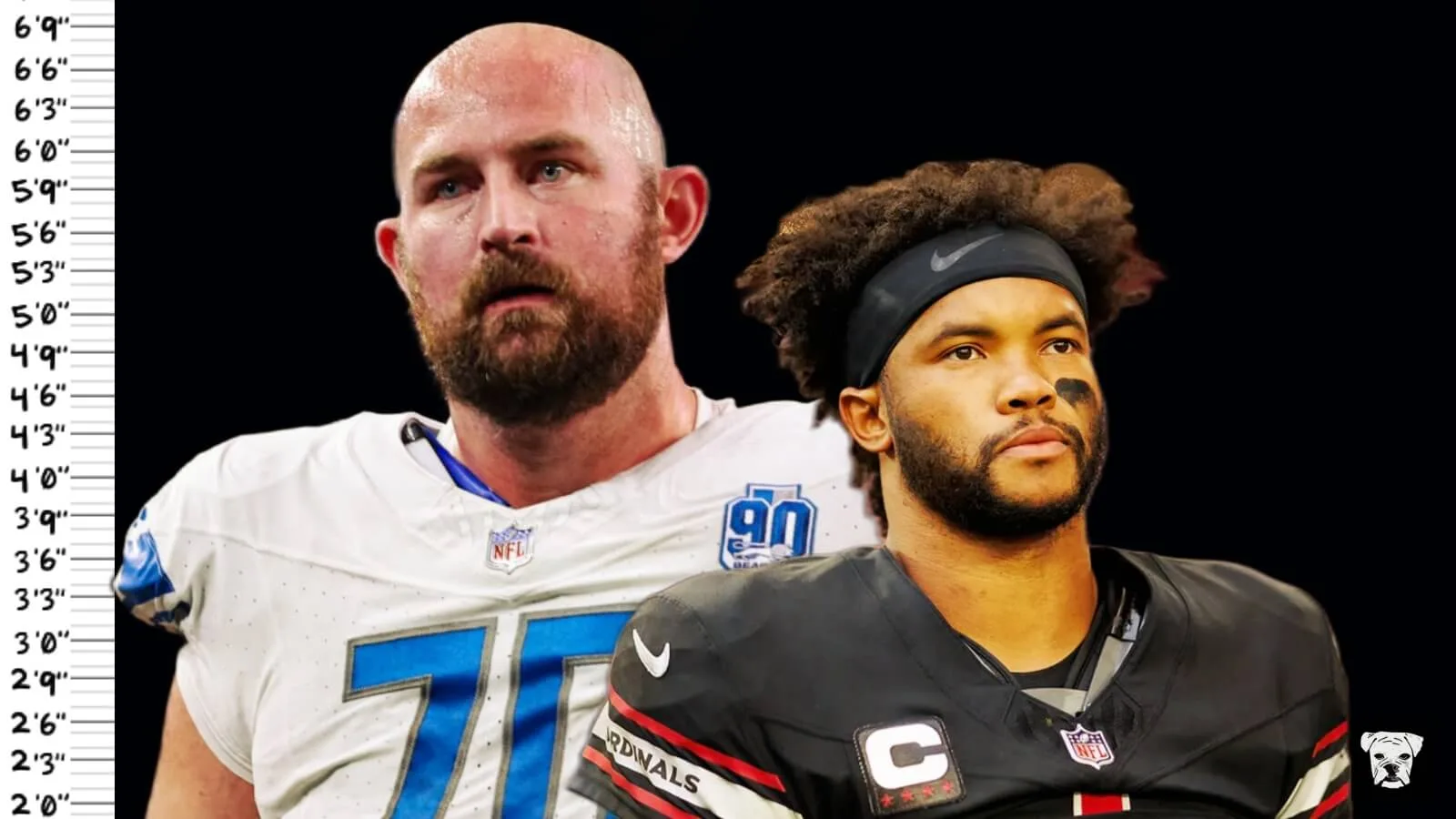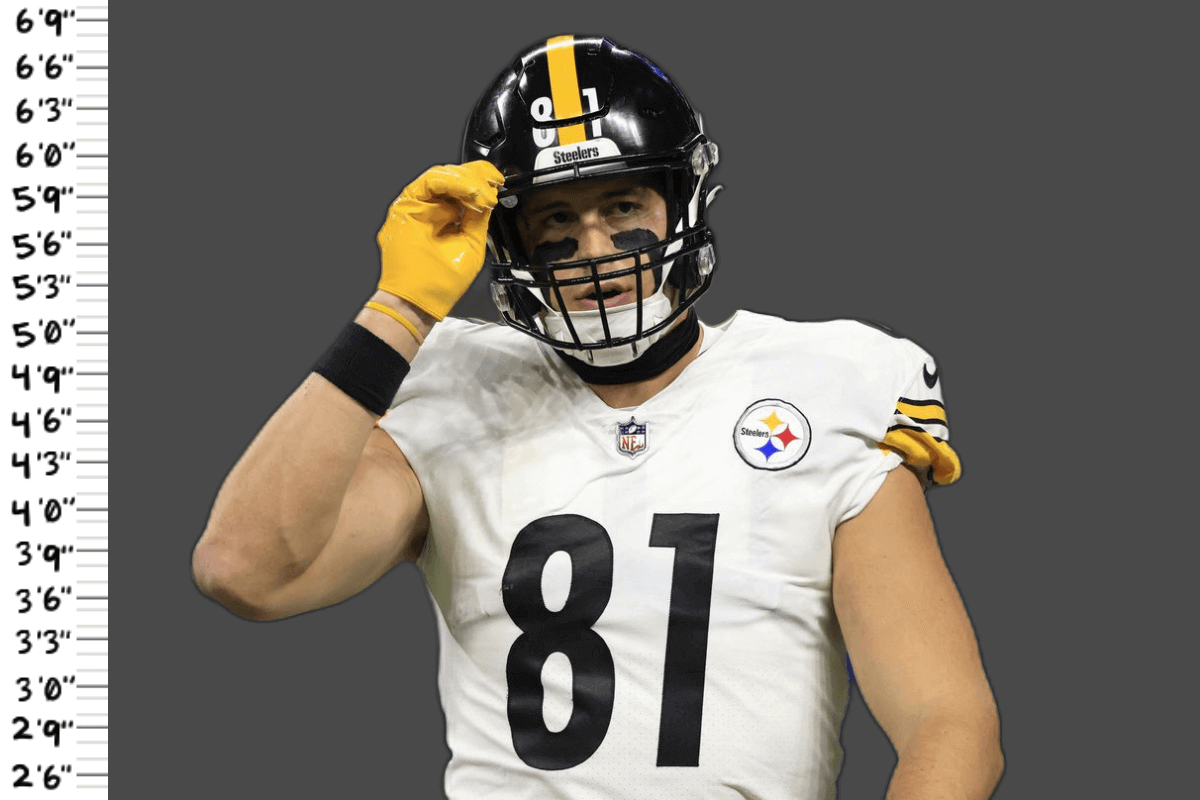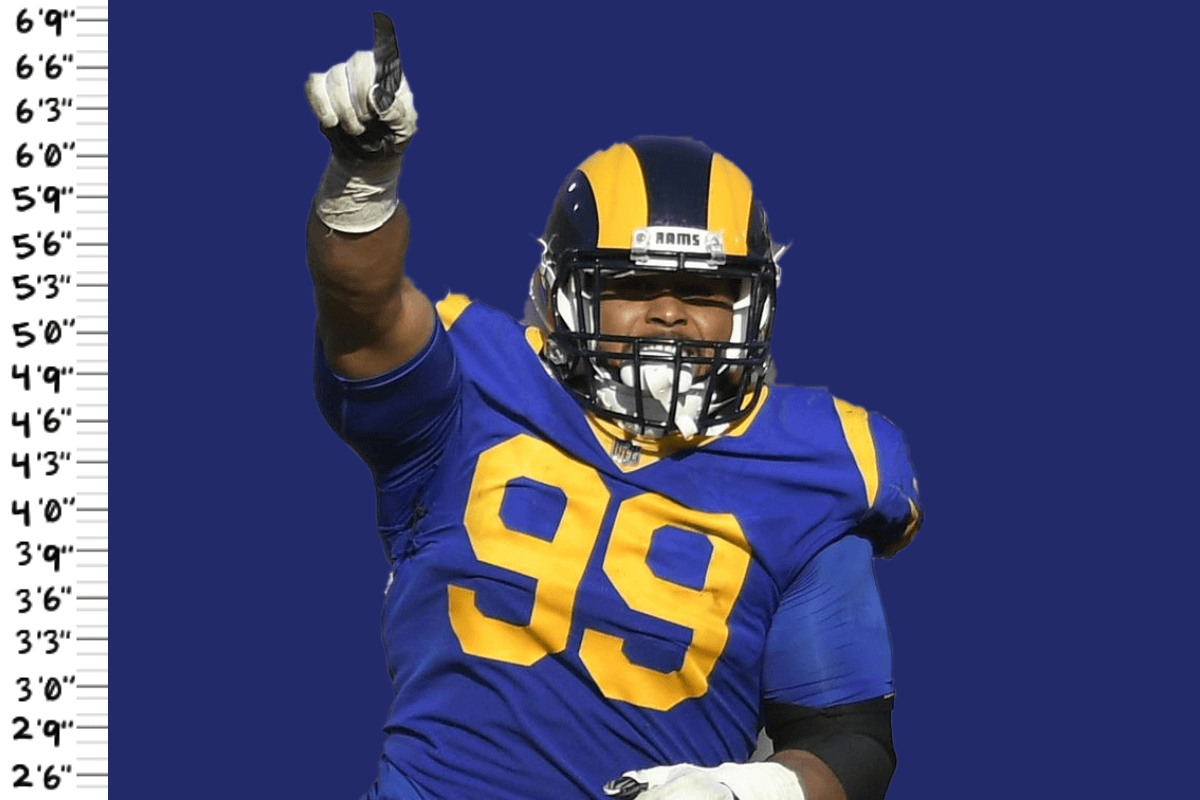Unpacking The **Average Height NFL**: What It Really Means For The Game
Have you ever wondered about the physical characteristics that shape a professional football player? It's a question many fans and aspiring athletes ponder, and it's almost always a topic of conversation. As NFL training camps kick off, with teams working to finalize their rosters, we get a fresh look at the incredible athletes who make up the league. Physical stature, you know, plays a big part in how the game unfolds on the field, so it’s something people often talk about.
The average height of an NFL player is, in a way, a fascinating data point. It tells us something important about the physical demands of the sport. We're talking about a game where size, strength, and raw athleticism are absolutely crucial for someone to find success. This isn't just about being tall; it's about how that height contributes to a player's overall ability to perform at the highest level, and that is very interesting.
Join us as we take a closer look into how a player's physical build helps shape the game. We'll explore the diverse array of talents within the NFL, considering how different body types contribute to the league's competitive nature. This guide, you see, gathers information from the average heights and weights of players across various position groups, offering a clear picture of what it takes to be a professional football player.
Table of Contents
- What is the Average NFL Player Height?
- NFL Height Compared to Other Sports
- Height by Position in the NFL
- The Tallest and Shortest in the League
- Understanding the Average: Mean and Median
- Frequently Asked Questions About NFL Height
What is the Average NFL Player Height?
So, what is the average height of an NFL player? According to a good deal of football player height research, the average NFL player height comes in at just under 6 feet 2 inches. This works out to around 188 centimeters, which is quite a significant figure when you think about it. This measurement, you know, considers all players across the league, giving us a general idea of the physical makeup of a professional football athlete.
This figure, approximately 6’2″, makes NFL players notably taller than the general population. This difference, in some respects, truly highlights the importance of physical stature in a sport where size, along with strength and athleticism, forms the foundation for success. The ability to dominate physically, it seems, often starts with a player's height. It's a key attribute that helps players perform their roles effectively on the field.
The average NFL height, in a way, takes into account the wide variety of players and their roles. It’s not just a random number; it's a reflection of the physical demands placed upon these athletes. When we talk about this average, we are looking at a central tendency, a common measurement that gives us a broad sense of the typical NFL player's build. This figure, you see, comes from looking at many different players and their measurements.
NFL Height Compared to Other Sports
It's interesting to compare the average height of an NFL player with athletes from other major sports. For instance, the average NFL player is several inches shorter than the typical NBA player. This makes sense, of course, given the different physical requirements of basketball, where extreme height is often a direct advantage for shooting and rebounding. Basketball players, you know, are usually quite tall, which is why this comparison is often made.
However, when you look at baseball, the average NFL player is a third of an inch taller than the average MLB player. This slight difference, in a way, shows how different sports prioritize various physical attributes. While baseball players need agility and precise movements, extreme height isn't always the primary factor for success. Each sport, you see, has its own unique physical demands that shape the average player's build.
These comparisons help us understand the unique physical blueprint of an NFL player. It’s not just about being big; it’s about being big in a way that suits the specific challenges of football. The blend of size, speed, and power in the NFL is, you know, quite distinct from other professional leagues. This makes the average height figure for NFL players particularly telling about the sport itself.
Height by Position in the NFL
While the overall average height for an NFL player is around 6 feet 2 inches, it's really important to remember that not all positions are equal. The average height can, in fact, be broken down by position, showing significant variations across the field. This means that a defensive lineman, for example, will typically be much taller and heavier than a running back or a cornerback. It's a key aspect, you know, of team building.
For this guide, we took an average of the heights and weights of each position group across the league. This gives a much more detailed picture of what is expected physically for specific roles. The shortest average, you might find, is around certain skill positions, where agility and quickness are more prized than sheer stature. This kind of detailed breakdown, you know, helps us understand the nuances of team composition.
Understanding average height and weight by position this regular season is very important for coaches and scouts. It helps them identify players who are best suited for particular roles on the team. A tall wide receiver, for instance, might have an advantage in jump balls, while a shorter, more agile slot receiver might excel at quick cuts. This kind of insight, you see, is crucial for building a successful roster.
You can explore more about average player height and weight by position in the NFL on various sports analytics sites. This data, you know, changes a little bit each season as new players come into the league and the game evolves. It's a continuous process of analysis and adaptation for teams. Checking out player statistics can give you a better idea of these trends.
The Tallest and Shortest in the League
Just for fun, beyond the averages, it's interesting to look at the extremes: the tallest, shortest, heaviest, and lightest players in the league, regardless of their position. These outliers, you know, show that while averages are helpful, individual differences are also a big part of the NFL's appeal. Sometimes, a player with an unusual height for their position can actually use it to their advantage, which is pretty cool.
Discovering the shortest and tallest NFL teams, from the Rams to the Commanders, in height ranking, can also be quite insightful. Some teams, you see, might prioritize a certain type of player build, leading to a slightly taller or shorter overall team average. This can influence their playing style and strategies. It's another way, you know, that physical stature shapes the game.
These individual stories, like that of the exceptionally tall offensive lineman or the remarkably short but elusive running back, really highlight the diverse array of talents in the NFL. It’s a league where unique physical attributes, when combined with skill and determination, can lead to great success. So, while averages give us a general picture, the individual stories are what truly capture our imagination.
Understanding the Average: Mean and Median
When we talk about the "average height NFL," we are usually referring to the mean. The mean, you know, is a very common way to calculate an average. You find the mean by adding up all the numbers in a set and then dividing by how many values there are. For example, if you wanted the average height of a small group of players, you'd add all their heights together and then divide by the number of players. This gives you a clear central point.
There are, however, other ways to look at central tendency. The median, for instance, is another important measure. When you arrange a set of values from smallest to largest, the median is the one right in the middle. The difference between median and average is that the median is the middle value, while the average is the mean of the values. Both the median and average (mean) are, you know, important measures in statistics.
For calculating the average of a list of numbers, you can use various tools. There are free calculators that determine the average, or the arithmetic mean, of a given data set. They can also return calculation steps, sum, count, and more. This kind of tool, you see, makes it easy, fast, and accurate to get results. It's how many of the average figures for NFL players are often determined.
This average calculator allows you to find the mean or average of a set of numbers. It is also known as a mean calculator. It helps you calculate the central tendency (mean value) of a dataset by adding the numbers and then dividing by the total number of values. So, in essence, when we say "average height NFL," we are mostly talking about this calculated mean height of all the players.
Understanding how these averages are calculated, you know, helps us appreciate the data more fully. It’s not just a number pulled out of thin air; it’s a carefully derived statistical measure. This understanding, in a way, helps us better interpret all sorts of player statistics. You can learn more about statistical analysis on our site, which might give you further insight.
Frequently Asked Questions About NFL Height
What is the average height and weight of an NFL player?
According to more than one study and multiple surveys, the average height of an NFL player is around 6 feet 2 inches. While this guide focuses on height, it's worth noting that average weight is also a key physical characteristic that varies significantly by position. We took an average of the heights and weights of each position group across the league for this guide, you know, to get a comprehensive view.
Do all NFL positions have the same average height?
No, not at all. While the league-wide average is about 6'2", not all positions are equal in terms of height. The average height can, in fact, be broken down by position, showing quite a bit of variation. For instance, offensive linemen and defensive linemen tend to be much taller than running backs or cornerbacks. The shortest average, you might find, belongs to positions where quickness and agility are more important than sheer height.
How does NFL player height compare to the general population?
The average height of NFL players is approximately 6’2″, making them notably taller than the general population. This figure, you see, really highlights the importance of physical stature in a sport where size, strength, and athleticism are crucial for success. It's a clear indication of the unique physical demands that are placed on professional football players, which is something to consider.
To continue exploring player statistics and team dynamics, you might find it interesting to visit our dedicated NFL insights page.

Average Height of NFL Players in 2025 (By Position)

Average Height of NFL Players in 2025 (By Position)

Average Height of NFL Players in 2025 (By Position)